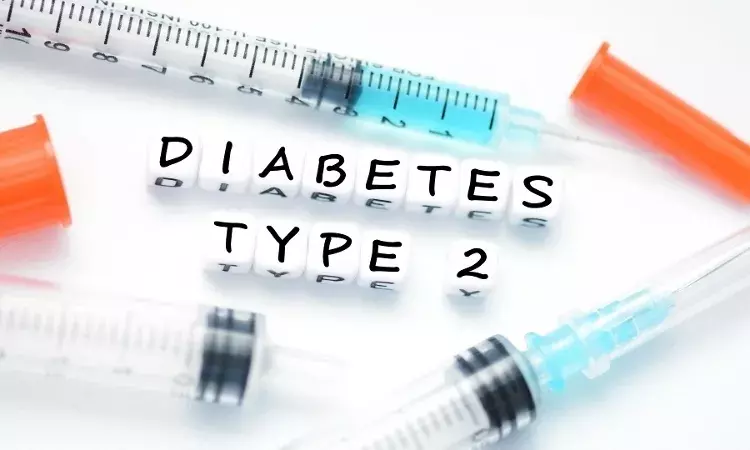- Home
- Medical news & Guidelines
- Anesthesiology
- Cardiology and CTVS
- Critical Care
- Dentistry
- Dermatology
- Diabetes and Endocrinology
- ENT
- Gastroenterology
- Medicine
- Nephrology
- Neurology
- Obstretics-Gynaecology
- Oncology
- Ophthalmology
- Orthopaedics
- Pediatrics-Neonatology
- Psychiatry
- Pulmonology
- Radiology
- Surgery
- Urology
- Laboratory Medicine
- Diet
- Nursing
- Paramedical
- Physiotherapy
- Health news
- Fact Check
- Bone Health Fact Check
- Brain Health Fact Check
- Cancer Related Fact Check
- Child Care Fact Check
- Dental and oral health fact check
- Diabetes and metabolic health fact check
- Diet and Nutrition Fact Check
- Eye and ENT Care Fact Check
- Fitness fact check
- Gut health fact check
- Heart health fact check
- Kidney health fact check
- Medical education fact check
- Men's health fact check
- Respiratory fact check
- Skin and hair care fact check
- Vaccine and Immunization fact check
- Women's health fact check
- AYUSH
- State News
- Andaman and Nicobar Islands
- Andhra Pradesh
- Arunachal Pradesh
- Assam
- Bihar
- Chandigarh
- Chattisgarh
- Dadra and Nagar Haveli
- Daman and Diu
- Delhi
- Goa
- Gujarat
- Haryana
- Himachal Pradesh
- Jammu & Kashmir
- Jharkhand
- Karnataka
- Kerala
- Ladakh
- Lakshadweep
- Madhya Pradesh
- Maharashtra
- Manipur
- Meghalaya
- Mizoram
- Nagaland
- Odisha
- Puducherry
- Punjab
- Rajasthan
- Sikkim
- Tamil Nadu
- Telangana
- Tripura
- Uttar Pradesh
- Uttrakhand
- West Bengal
- Medical Education
- Industry
Triglyceride glucose index superior to HOMA-IR for predicting type 2 diabetes: Study

Korea: A recent study in the journal Diabetes Research and Clinical Practice has shown the triglyceride-glucose (TyG) index to be superior to HOMA-IR for the prediction of type 2 diabetes. The findings imply that the TyG index may be a useful tool for the prevention and detection of T2D.
Previous studies have shown insulin resistance to be an independent risk factor for the development of type 2 diabetes. Jun-Hyuk Lee, Eulji University School of Medicine, Seoul, Republic of Korea, and colleagues aimed to compare the predictability of the triglyceride–glucose (TyG) index and the homeostatic model assessment of insulin resistance (HOMA-IR) for the prevalence and incidence of type 2 diabetes.
For this purpose, the researchers analyzed data from 9730 adults aged 40–69 years at baseline and 7783 participants without diabetes. They were followed up in the Korean Genome and Epidemiology Study survey. This survey was conducted biennially (six follow-ups) from
We analyzed data from 9730 adults aged 40–69 years at baseline and 7783 participants without diabetes who were followed up in the Korean Genome and Epidemiology Study survey. From 2001 to 2002 (baseline survey) to 2013–2014, this survey was conducted biennially (six follow-ups). The average follow-up period was 9.0 years.
Key findings include:
- The TyG index showed better predictability for the prevalence of type 2 diabetes than HOMA-IR (TyG index: 0.784, HOMA-IR: 0.728).
- The area under the time-dependent receiver operating characteristic curve of the TyG index for incident type 2 diabetes was 0.640, which was significantly higher than that of HOMA-IR [0.531].
The researchers concluded, "The triglyceride–glucose (TyG) index is superior to HOMA-IR for predicting type 2 diabetes. The TyG index could, therefore, be more useful for the early detection and prevention of type 2 diabetes."
Reference:
The study titled, "The triglyceride–glucose index is a more powerful surrogate marker for predicting the prevalence and incidence of type 2 diabetes mellitus than the homeostatic model assessment of insulin resistance," is published in the journal Diabetes Research and Clinical Practice.
DOI: https://www.diabetesresearchclinicalpractice.com/article/S0168-8227(21)00401-0/fulltext
Dr Kamal Kant Kohli-MBBS, DTCD- a chest specialist with more than 30 years of practice and a flair for writing clinical articles, Dr Kamal Kant Kohli joined Medical Dialogues as a Chief Editor of Medical News. Besides writing articles, as an editor, he proofreads and verifies all the medical content published on Medical Dialogues including those coming from journals, studies,medical conferences,guidelines etc. Email: drkohli@medicaldialogues.in. Contact no. 011-43720751


